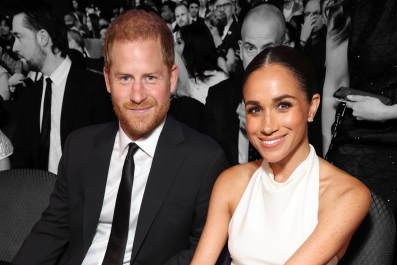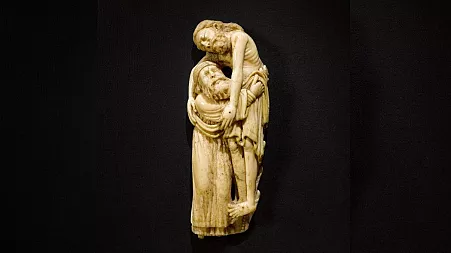Like a long-jumper struggling during a run-up, this new exhibition at Cambridge’s Fitzwilliam Museum toils sluggishly before – halfway through – taking off. Coinciding with Paris 2024, it revisits the last time the Summer Olympics were held in the City of Light, a century ago.
Yet, before exploring the cultural impact of those games, it missteps – after some by-the-numbers scene-setting, involving jerky newsreel footage and ho-hum black-and-white photographs – by focusing for too long upon the stories of various athletes, including several associated with the University of Cambridge. Throughout the show’s three rooms, Vangelis’s electronic theme for the Oscar-winning film Chariots of Fire, which immortalised alum Harold Abrahams’s track heroics, is inescapably audible.
You can understand why this university museum would wish to big up such success. But a glut of memorabilia – an old photograph of a college ball, a boat-race card, an “illuminated trophy oar spoon”, and other arcane, elitist bits and bobs – makes for a boring, and parochial, opening: the exhibition equivalent of a false start.
Moreover, art inspired by sport can be insipid – as exemplified, here, by two canvases depicting football and rugby players by Jean Jacoby, who won gold for Luxembourg in the 1924 Olympic Arts Competition (held from 1912 to 1948). Various exhibits (if they’re not reproductions, rather than the real thing) feel slight or scrappy, and shoehorned in.
Thankfully, the curators break sweat to include a few decent pieces – such as Umberto Boccioni’s famous Futurist figure of 1913, lent by the Tate. Supposedly inspired by a scurrying footballer, it looks like a burning faun, sprinting in agony.
Tennis, that most aesthetic of sports, dominates. A debonair (if decorative) blur of flickering Cubistic forms painted in 1917 by André Lhote evokes, in the manner of slowed-down footage, a couple of bob-haired, white-clad tennis players mid-match before ball-like trees. Alexander Calder’s charming, albeit tricksy, wire sculpture captures the dynamic silhouette of American champ Helen Wills, dressed in a skirt and visor, lunging to play a devilish forehand.
Wrestling is prominent, too. The show opens with a plaster cast of the Uffizi’s ancient sculpture of a pair of interlocked, musclebound naked men, who seem, frankly, to be going at it. Given the Olympics’ origins, this classical context is no surprise; a preoccupation with traditional ideals of male physical beauty, and the erotic subtext of elite sport, is evident even in Jean Droit’s (horrid) official poster for the 1924 games, which presents a bevy of bare-chested, saluting male athletes, with priapic palm fronds erupting before their crotches.
As Luke Syson, the Fitzwilliam’s director, cheerfully tells me: “I don’t know of any gay man who hasn’t spent some time fantasising about [British Olympic diver] Tom Daley.”
In a section titled “Sex and Sport”, girls also get a look-in. On loan from Stuttgart, Willi Baumeister’s strange, bewitching painting Female Runner II (1925) depicts a tippy-toed, dryad-like athlete, naked except for a blue headband, zipping around a track as if borne by an invisible cloud.
Fashion forms another subplot, providing an excuse to include a sweat-stained silk tennis dress from c.1925 – as well as, tenuously, an opera cloak decorated with motifs “attributed to” Natalia Gontcharova (and, randomly, a beaded evening gown by an “unrecorded French maker”).
Given such skittering, and its slow start, Paris 1924 is unlikely to win a place on this year’s best-exhibitions podium. Still, it contains several invigorating, memorable moments, mostly concerning social history.
From July 19; fitzmuseum.cam.ac.uk
Disclaimer: The copyright of this article belongs to the original author. Reposting this article is solely for the purpose of information dissemination and does not constitute any investment advice. If there is any infringement, please contact us immediately. We will make corrections or deletions as necessary. Thank you.




